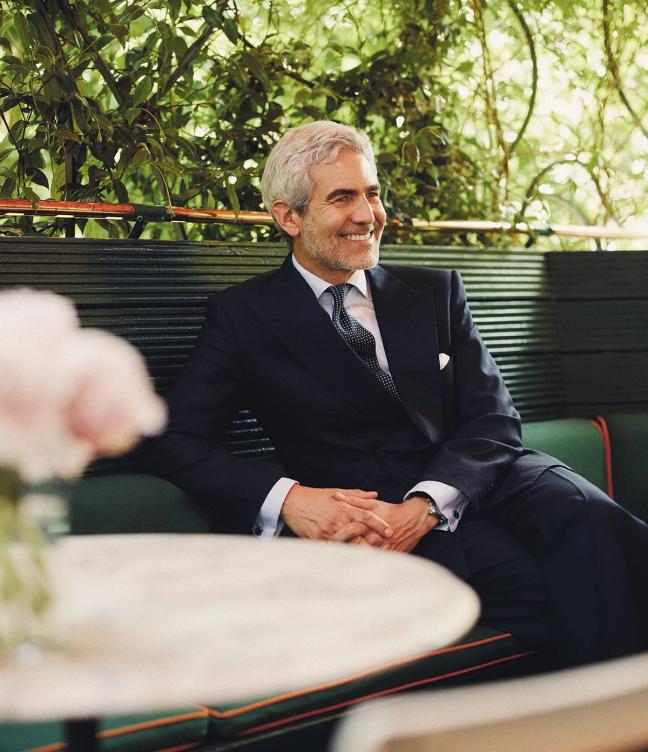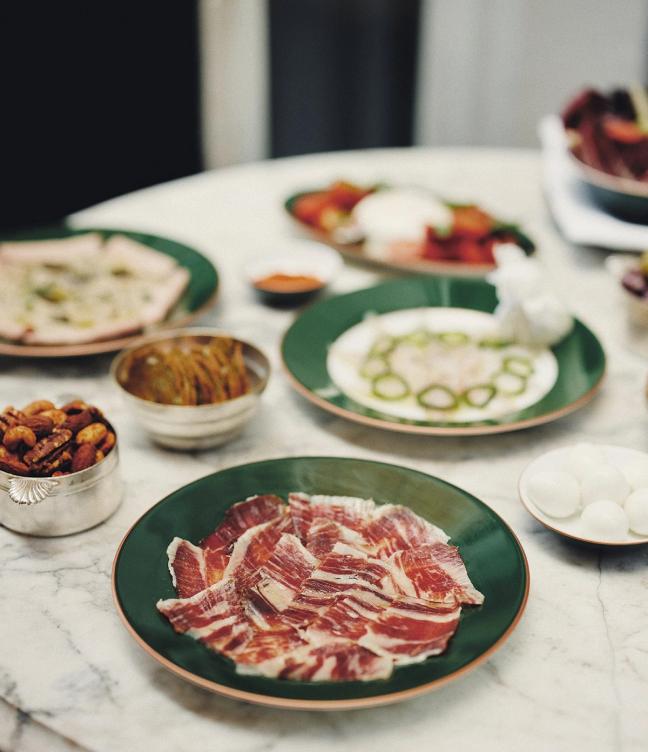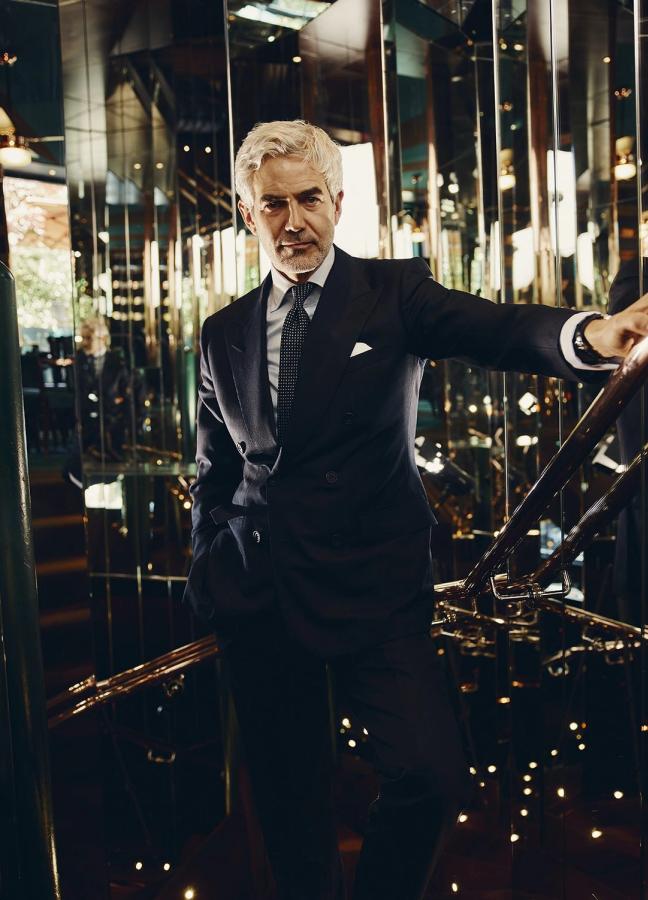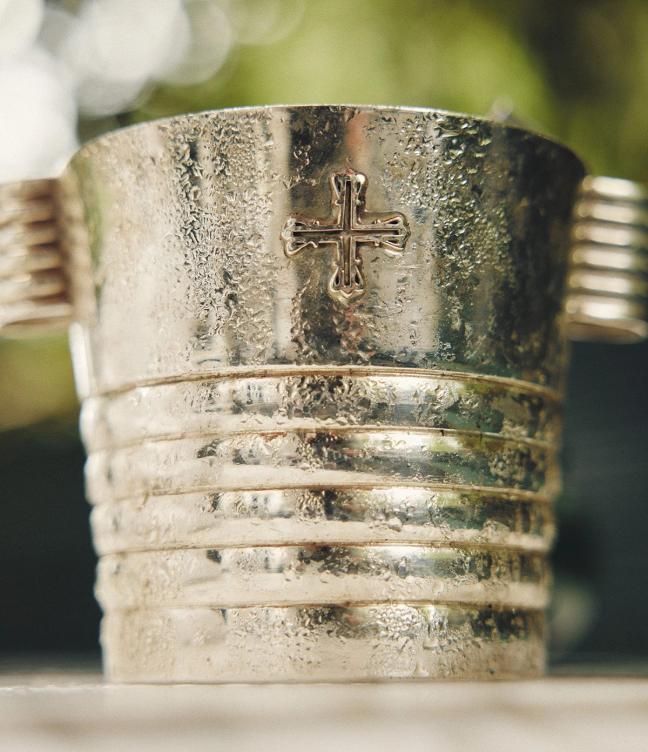Juan Santa Cruz: “It’s like building a cocktail — an interesting collective”
As the restaurateur launches his boldest creation yet, a new Casa Cruz in Manhattan, Santa Cruz reveals how he chose his 100 ‘partners’ for the project…
On February 16th, 1892, The New York Times published a list of 400 names on its front page. This, the paper announced, was the official roll call of the people that mattered according to the people that mattered — the 400 figures that made up ‘Society’ in the city’s new Gilded Age.
There was science in the snobbery: 400, you see, was the number that might happily fit into the ballroom of one Caroline Schemerhorn Astor, Manhattan’s arch hostess (or Mrs Astor to you). Or perhaps it was the number of diners who could comfortably be seated at chichi restaurant Delmonico’s down on Fifth Avenue on any given night. Or maybe it was simply the number of hot-trotters that might feasibly dance the cotillion of an evening, whatever that is.
Either way, the list was taken just as seriously as something so frivolous ought to be. It was a final inventory — after generations of cunning breeding, decades of jostling and elbowing — of the cream of the crop: a name-droppers charter, cascading with syllables and full of imported vowels. Vanderbilts, Stuyvesant-Fishs, Worthington-Whitehouses, DeLancey Kanes.,
That was then. Of course, the press’s appetite for putting silly things in lists has bounded on merrily over the last 130 years, while for some reason there’s a new fascination with the Gilded Age itself: a splashy television show by that name from the makers of The Crown; a Met Gala Ball theme; a new class of Robber Baron, only this time they’ve got rocket ships instead of railroads.
I think we can leave most of the baubles of that age behind (anything gilded, after all, must surely have something base and dull underneath.) But down on Manhattan’s 61st street — not so far from the great, bulldozed mansions of old — a modern-day Astor ballroom is shaking off its coat. This time, though, the list of players totals just 100, and it isn’t predicated on snobbery or status anxiety.


Instead, as Juan Santa Cruz, the co-founder behind this new venture, points out: “you just have to be nice and interesting,”, with emphasis, you sense, on the nice. This is the latest outpost of the restaurateur’s Casa Cruz group (there are two others, you’ll remember, in London’s Notting Hill and in Buenos Aires), which he’s setting up over the pond with business partner Charlotte Santo-Domingo. The two will be flanked by 100 partners, plucked from the worlds of film, finance, sports, and the arts — and all united, Juan says, by their affability, their friendliness, and their appreciation of the good life.
“I wanted to curate a group of nice and interesting people. It’s like building a cocktail — an interesting collective,” Juan explains, when we meet in the storm before the storm of his June soft opening. “And they are people that I think are going to be very interested in hanging out with each other.”
Each of the 100 partners gets a key, he tells me, “which is mostly symbolic” — though they can use it to control a special lift in the six-storey beaux arts townhouse which Casa Cruz will soon call home. “It takes you up to the fourth, fifth and sixth floors, which are the partner floors,” he explains. It’s lazy nowadays to refer to restaurateurs or hoteliers as being ‘Wes Anderson-esque’ in their attention-to-detail or creative whimsy. But Juan, really, is as much a director as anything else. He is curating an experience, a point of view, from the moment you approach one of his buildings.
At Casa Cruz in Notting Hill, for example, the big, shimmering bronze door is a looking-glass portal that sucks you in and deposits you swiftly inside its hushed, deep green interiors — like Alice in Wonderland, only with better potions. The chairs are set in wide-wale corduroy, the rooms are hooped in illuminated copper rings and mahogany tones, and the terrace soon engulfs you in tropical fronds and bubbling conversation.
And then, suddenly, apparating out of the middle distance like the older brother you never had sails the man himself — a princely character from Fitzgerald; the Great Juansby — in E Marinella ties and navy fresco lapels. (When men have dreams in which they fantasise about opening their own restaurant, it is because they hope that they might one day look like Juan Santa Cruz.) You half expect fireworks in the background, or a Scorsese freeze frame and a stretch of Tchaikovsky.

“What I have always done is build a stage for interesting people with a good vibe to eat, to hang out, to have fun,” Juan says. “I am more than anything an entertainer. My tools are a beautiful place, good atmosphere, good drink, good food. But my main goal is that when you come to my restaurant, and you leave, you think: ‘that was fun.’”
This may seem such an obvious, common aim, but it really isn’t. Read any broadsheet review of a restaurant, and you’ll spot five-star ratings for the food, the service, the atmosphere, the wine, or the price. But you’ll never spot anyone evaluating the reason we presumably all go out in the first place: fun. That’s because it is the hardest thing to quantify, and the trickiest thing to get right.
But Juan is the fun whisperer. He is radioactive with bonhomie. The beauty of his places is that they each achieve a neat balancing act between the meticulous and the impulsive; that the Versailles-grade symmetry and precise service always threatens, come the right time of the evening and the right potency of negroni, to break out it into something altogether spicier.
“My biggest compliment is that you come in the next day and say: Juan, last night was incredible. But you cannot put your finger on what made it so fun. Was it the food? Was it the service? Was it the flowers, the atmosphere, the ambience?”, he says. “Sometimes, these all work together to become something more.”
“I am, more than, anything an entertainer…”
New York, one suspects, will warm to this mission instantly. It is supposedly the city that never sleeps, and Casa Cruz is never snoozy. Manhattanites will also enjoy the extra degree of polish that Juan looks set to bring with him — the indulgent meticulousness that London has fostered since the old days of Clubland. He is millimetric on the details. But he also brings with him an outsider’s perspective. “Sometimes you need to see something from the outside to see what it really is,” Juan says. “It is like seeing the forest for the trees. If you’re there, you’re too consumed in what is immediate and close to you.”
The building itself has been treated like a beautiful suit, crafted from the finest materials and passed down the generations — but now in need of some clever tweaks; a few nifty pins and edits. “Originally it was somebody’s home, then it had a couple of iterations, and then it was occupied by the Cisneros family of Venezuela as a family office. Then they sold it to somebody who sold it to somebody, and we bought it.”
The facade itself has been immaculately maintained, with its stately oriel windows and period features. Inside, a gorgeous staircase drapes, like a silken ribbon, through the length of the townhouse, and the familiar Casa Cruz touches are everywhere: those corduroy textures, the gentle preppy stripes, the marquetry table-tops with their almost pearl-like shimmer. Your Casa away from Casa. (It’s the same with the food — all the restaurant’s signatures are here, like the blackened chicken and the wonderful spiced corn and the marbled fillet steak.)


The biggest tweak, perhaps, was to the ground floor, which the team decided to lower in its entirety in order to give better accessibility and pump up the ceiling height. It sounds like a mammoth undertaking, but Juan says that — compared to the Kafkaesque permitting issues and the chaos of the pandemic — it was actually pretty straightforward.
“The list I could give you of complications on this is endless,” he says. “But at the end of the day, the place is there and it is looking incredible. We have an incredible group of people behind it. And we’re opening at the best possible time in the last three years.”
What does Juan hope for when September comes, and Casa Cruz opens in earnest? “Luck, I think, is key in everything you do in life. I have been very lucky all my life. If I have been unlucky, I have usually managed to turn it into something good. And I have been very supported by my friends — that’s the luckiest thing you can wish for. But yes: It will be very convenient to have some luck in New York.”
Manhattan feels like the final piece of the puzzle for Juan. (Well, the Casa Cruz puzzle, at least — one suspects there are many more games to come.) After Buenos Aires, then London, this is the decisive third act. And if you can make it there…
“A friend told me recently that a man’s best years are between 50 and 63,” Juan says. “Because you know who you are. You know what your abilities are. You know what your shortcomings are. And you have the network and the system to achieve what you really want.” He pauses. “I’m 50 now, and I feel like I now have a strength I didn’t have before. I am much more self assured. I know how to get certain things done. And I know what things aren’t my strengths and I’m not going to fight at those anymore. But it made me think — anything I do will have to happen in this period. The substantial things that I want to happen in my life, I need to make happen now.” Then he claps his hands decisively. “And that’s exactly what I intend to do!”
This article was taken from the Summer 2022 issue of Gentleman’s Journal. Take a look inside the latest magazine here…
Become a Gentleman’s Journal member. Find out more here.

Become a Gentleman’s Journal Member?
Like the Gentleman’s Journal? Why not join the Clubhouse, a special kind of private club where members receive offers and experiences from hand-picked, premium brands. You will also receive invites to exclusive events, the quarterly print magazine delivered directly to your door and your own membership card.
Further reading

Restaurant review: with ABC Kitchens, Jean-Georges Vongerichten produces yet another multi-layered venture

Conor Kennedy, the grandson of RFK, on secretly fighting in the war in Ukraine
